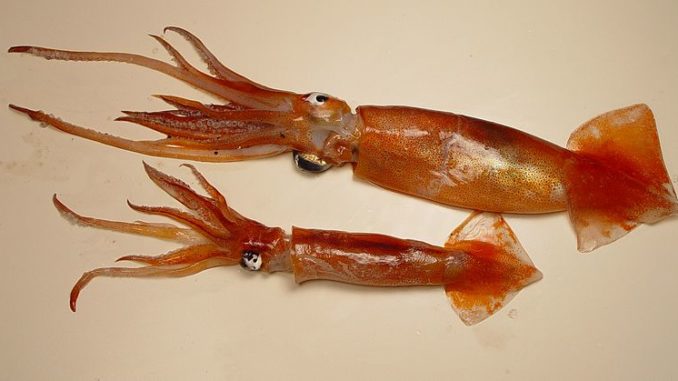
In the Mediterranean and along the eastern and western shores of the North Atlantic lives a ten-armed migratory cephalopod, Illex coindetii.
Commonly known as the southern shortfin squid or the broadtail shortfin squid, I. coindetii is, well, rather common. Considered a species of least concern by the International Union for Conservation of Nature (IUCN), it is not endangered at all.
That’s a good thing, as myriad species of fish prey on I. coindetii, including bluefin tuna and swordfish. Seabirds aren’t too proud to dine on shortfin squid, and among mammals, dolphins and pilot whales are known to have a taste for them as well. Even humans include these creatures on the menu.
To avoid becoming lunch, shortfins employ several survival strategies, including gathering in schools, jetting away from predators, releasing clouds of ink, and the use of camouflage. You know, the usual squid stuff.
Shortfin squid aren’t at the bottom of the food chain, though. I. coindetii feeds on fish, crustaceans, and other cephalopods. Some of the same species of fish that prey on this cephalopod may also become dinner fit for a squid, including cod in the juvenile stage. Other fish they are known to consume include mackeral, herring, and haddock.
Okay, so what makes this critter interesting enough to read about? (Or write about, for that matter? I mean, come on now.) Glad you asked; how about giant gelatinous egg sacks full of tens of thousands of squid eggs?
Before going further, in the interest of full disclosure, you should know that giant gelatinous egg sacks may also be referred to in the literature as egg balloons, egg masses, and blekksprutgeleball (which is Norwegian for squid gel ball). No, this is not important to know and will not be on the quiz.
An average-size female shortfin squid is 25 to 27 cm (9.8 to 10.6 inches) long, not including tentacles. Yet they produce egg balloons much larger than themselves. The egg masses of I. coindetii are typically about 1 meter (39.4 inches) across. Some blekksprutgeleball are even bigger, including the one recently happened upon by three Norwegian scuba divers off the coast of Norway.
Video: Swimming Next To Giant Squid Egg
Question of the night: How do you like seafood now?
